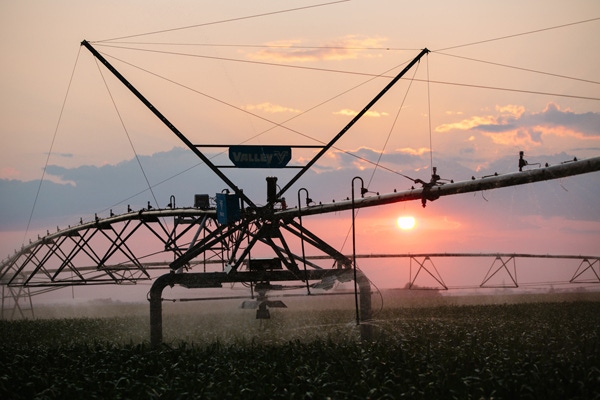January 6, 2015

The days of simple pivot irrigation are probably over. The set-and-forget approach to watering a field has been trumped by concerns over water use. Even farmers not in areas that limit irrigation use are getting the message, and they’re turning to sophisticated sensors to manage water use.
Dan Garner, Petersen Seed Farm, Grand Island, Neb., has been involved with a test being conducted by the farm to learn more about how soil sensors can impact irrigation use. “We’ve been working with the system for two years to better manage our irrigation,” says Garner.
Petersen Seed Farm is a contract seed corn producer that also raises commercial crops. While its part of Nebraska isn’t governed by water-limiting issues — yet — the farm is looking at new technology to make the best use of water in the operation.

Dan Garner found that with the help of an in-field moisture probe, he wasn’t measuring moisture in the soil profile properly for the farmland he manages. Slowing the pivot made the difference.
Dan Garner found that with the help of an in-field moisture probe, he wasn’t measuring moisture in the soil profile properly for the farmland he manages. Slowing the pivot made the difference.The operation turned to John Deere Field Connect, which relies on networked sensors placed in a field that provide a detailed picture of how water that’s applied to a field moves through the soil.
Kyle Smydra, precision farming consultant, Greenline Equipment, Grand Island, Neb., shares that the key to Field Connect is a meter-long probe with sensors down its length that offers a look at moisture in the soil profile.
“The meter shows how much water is deep into the soil profile,” Smydra says. “Many guys who irrigate may think they’re getting the right amount of water on, but they’re surprised by what they find with this system.”
Slowing down, improving results
Garner was surprised by what he found on a test field where he was using the system in 2014. “I found that if I ran the pivot like I usually do it looked like I was getting a lot of water into the field — but that’s not what the probe showed,” he says.
Smydra explains that a pivot can deposit a lot of water on the surface, but that doesn’t always mean that water is getting where it needs to be. “We found with Petersen’s that slowing the pivot down improved water infiltration on the field,” he says.
The result, according to Garner, was that the field looked better. He believes, as he looks at the data, that the yield was higher, too. “Every field is different, and this probe shows us how water gets into the profile,” he adds.

Brad Petersen, Petersen Seed Farms, while testing soil moisture probes, has found he likes having immediate access to field information right from the computer. It allows for better management.
Brad Petersen, Petersen Seed Farms, while testing soil moisture probes, has found he likes having immediate access to field information right from the computer. It allows for better management.Brad Petersen, the farm’s owner, says he’ll continue testing the system. “We’ve been trying it on different fields and different soil types to get a better idea of how our pivots were working,” he says. “And it’s nice to be able to monitor water use remotely from the system, too.”
Petersen notes he can pull up the moisture profile of a specific field and view it from any location; employees use the iPad or a desktop computer. Information is stored in the myjohndeere.com Operation Center — a centralized location for data collected on the farm. Smydra notes that farmers use the Field Connect probe under a lease, and after each season the systems are brought back to the dealership, checked out and made ready for the next season.
“We’re providing in-depth information customers can use to better manage their water,” he notes. “Sometimes it’s as simple as slowing the pivot — or there are other practices, too. The probe helps determine what to do.”
About the Author(s)
You May Also Like






